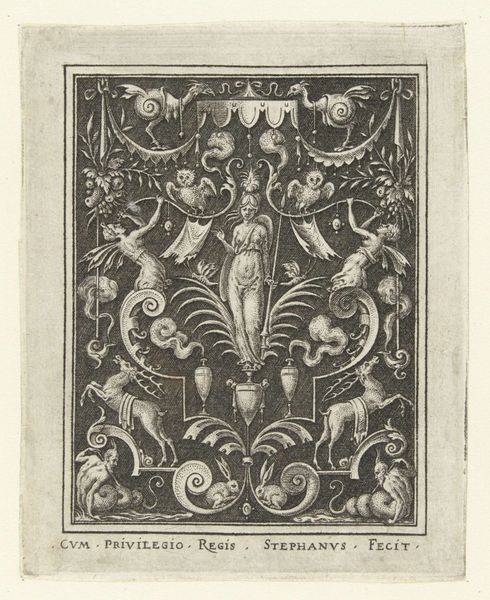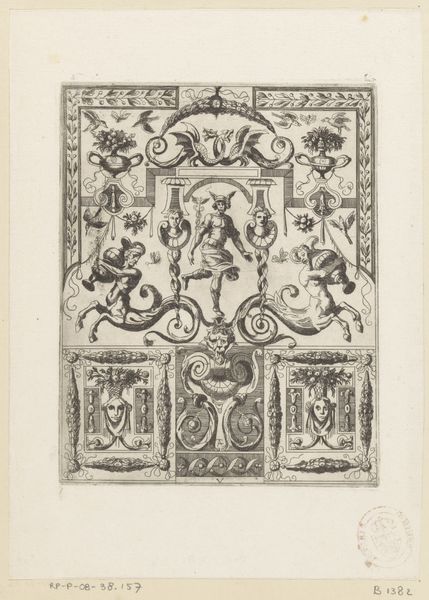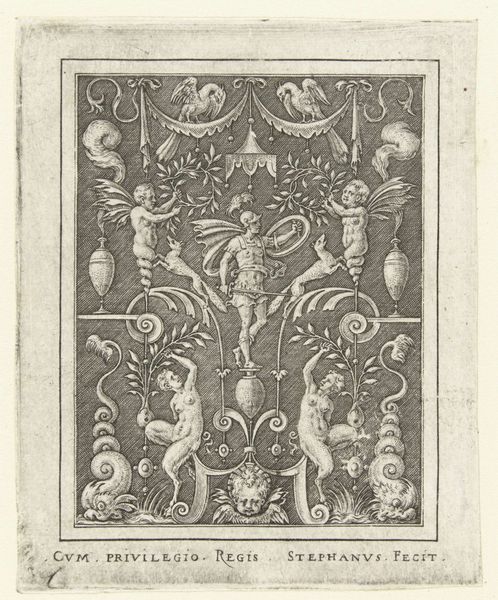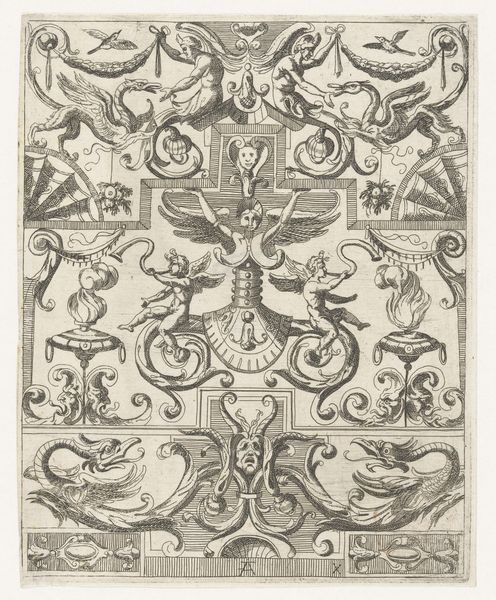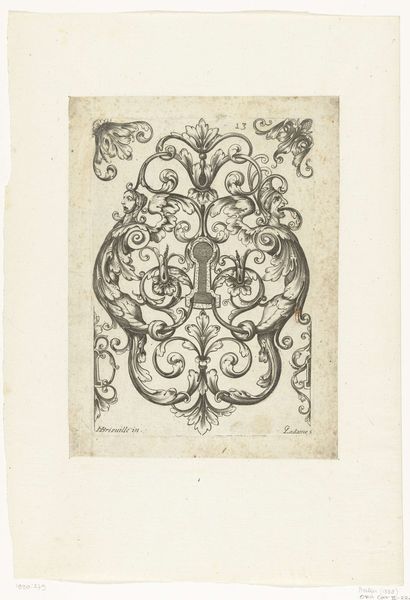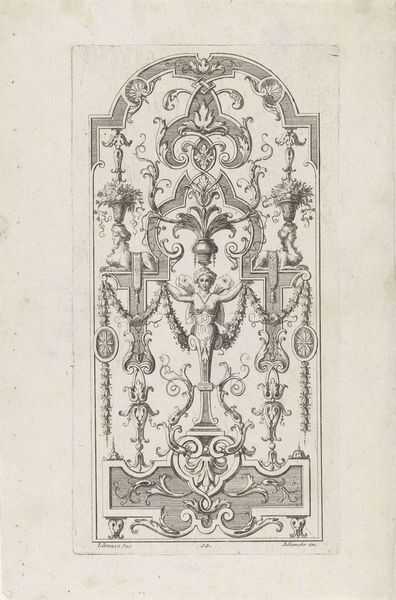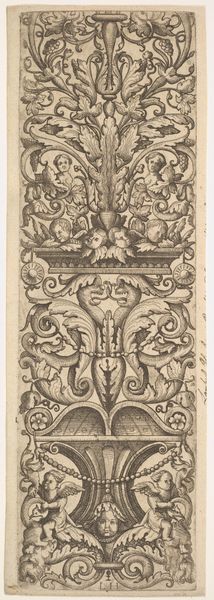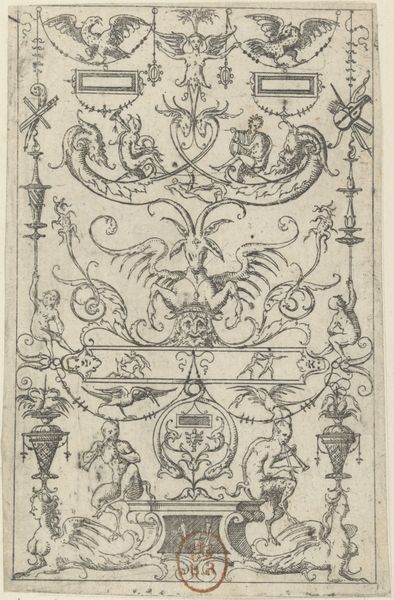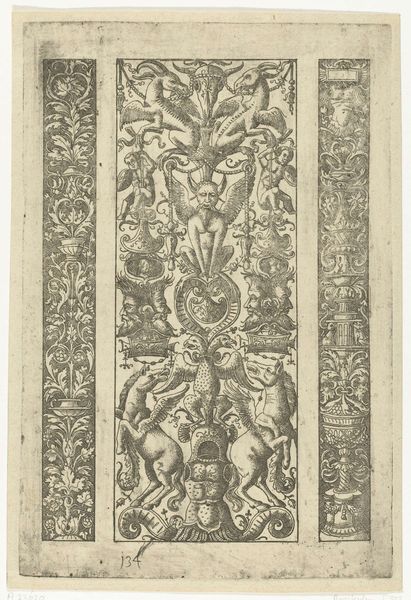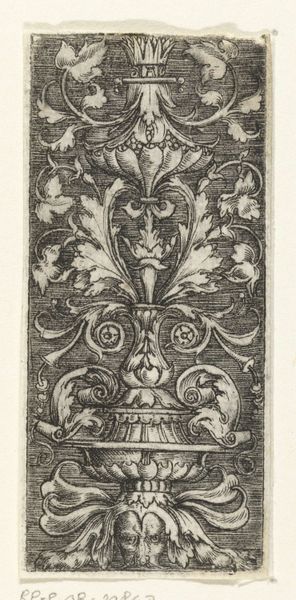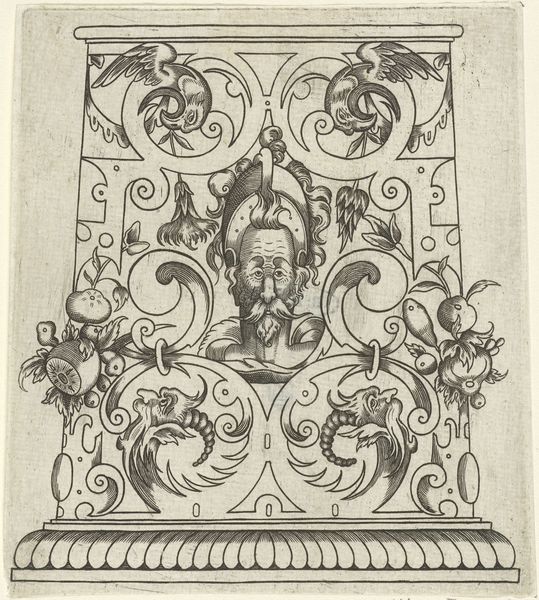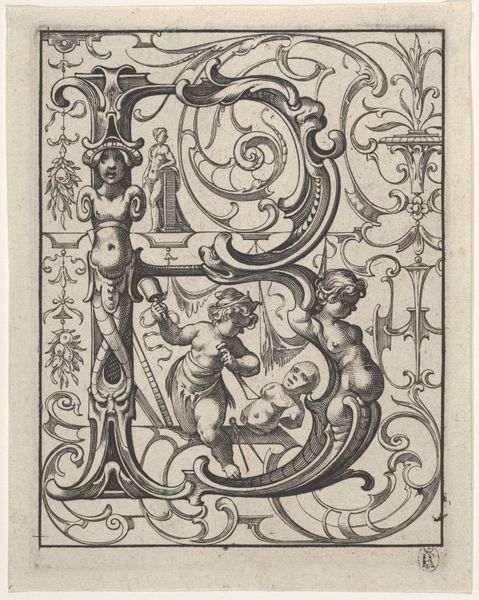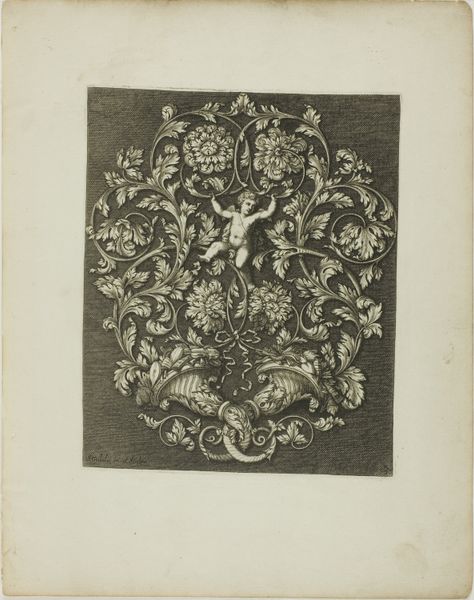
print, etching, engraving
# print
#
etching
#
etching
#
figuration
#
ancient-mediterranean
#
history-painting
#
decorative-art
#
engraving
Dimensions: 3 3/16 x 2 11/16 in. (8.1 x 6.83 cm) (image)4 7/8 x 3 7/8 in. (12.38 x 9.84 cm) (sheet)
Copyright: Public Domain
Curator: Here we have "Bellona," a print etched and engraved by Étienne Delaune around the 16th century. You'll find it residing here at the Minneapolis Institute of Art. What are your initial thoughts on this composition? Editor: Intricate! A real fever dream of embellishment, like a blacksmith having a wild night after reading Ovid. But it’s contained. You know? Tiny, precise… controlled chaos. Curator: Indeed. Notice how the central figure, Bellona, Roman goddess of war, stands rigidly within an almost claustrophobic framework of ornamentation. The decorative elements fight to overwhelm the subject. Consider the implications of this tension. Editor: Right, like, is she caged? Is all that fanciness trying to bury her, or is it celebrating her? I mean, war isn’t all marching and cannons. It’s also… politics, ritual, showmanship. So, maybe all the swirls are part of her deal. Curator: Precisely. And Delaune’s technical mastery reinforces these ideas. The precise lines and intricate details elevate the piece beyond mere decoration, hinting at deeper cultural anxieties surrounding war. Note, too, the recurring motifs - winged creatures, grotesque masks... What symbolic weight do they carry within the overall structure? Editor: They're definitely mischievous! Those little beasties could be torturing anyone at any time. The faces in the background aren't much friendlier. They're all part of Bellona's party... a celebration tinged with cruelty? Curator: That interpretation aligns with much scholarship surrounding depictions of warfare during this era, a recognition that its brutal reality was often masked by pomp and allegory. It prompts us to reconsider both historical and contemporary perceptions of conflict. Editor: Yeah, this Bellona doesn't look like she's having fun, exactly. Maybe a bit resigned. All dolled up for a party that's bound to get messy. This little picture is telling quite the story. Curator: Absolutely. Its diminutive scale belies the complex network of visual and thematic threads woven throughout the image. A potent commentary distilled into a carefully structured scene. Editor: Well, I wouldn’t want to meet her on the battlefield… or at a party, for that matter. But I wouldn’t mind having her watch over me… from a distance. Curator: An unsettling comfort, perhaps. In any case, Delaune's "Bellona" invites us to ponder the relationship between conflict, artifice, and power. Editor: Exactly! Something about this piece really messes with my sense of right and wrong, doesn’t it? But maybe that’s what great art is supposed to do? Thanks for showing me.
Comments
minneapolisinstituteofart almost 2 years ago
⋮
Étienne Delaune worked in the tradition of the Fountainebleau school, named for the decorative program begun in the 1530s at Francis I's palace near Paris. The principal artists were Italian, well versed in ancient grotesques. Delaune used their ideas to develop a unique serpentine style of grotesque, packed with his own marvelous hybrid creatures. This print of Bellona, the Roman goddess of war, would have provided the design (likely inlaid with silver or gold) for armor or a gunstock.
Join the conversation
Join millions of artists and users on Artera today and experience the ultimate creative platform.
